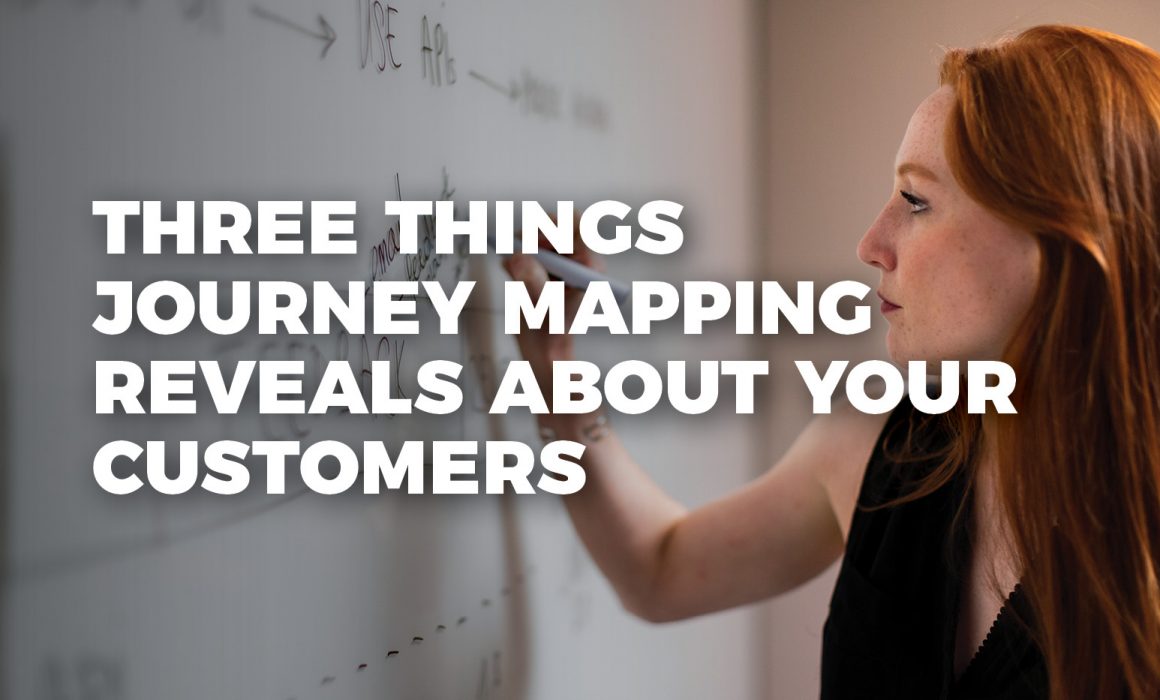Three Things Journey Mapping Reveals About Your Customers
Customer journey mapping isn’t a new concept, and there are several philosophies about how to go about it. But for many brands, the exercise is done when launching a new product or a re-brand and is typically not considered again until another major change in business strategy. However, this tool provides clear insight about your internal and external stakeholders – making it a worthwhile, ongoing exercise to reveal new ways of thinking about your audiences and how you connect with them.
There are a number of ways to construct a customer journey map, but we recommend keeping it simple:
- First, identify the milestone interactions of a typical customer – researching, reading reviews, seeking referrals, engaging, purchasing goods or services, interacting with brand/customer service, advocating or promoting, adding products/services or even ending the relationship/service. Depending on the industry, the audience segment and the brand, these basic phases may look quite different.
- Once your key milestones are outlined, determine the goal for each phase. What is the customer’s goal? What is the business’s goal? What activities are happening at each phase – from both the customer and the business perspective?
What desired actions do we want the customer to take? And what are all the critical touchpoints the customer will have in this phase? - Once you’ve completed these steps, simplify the information so it becomes a quick reference as you design your marketing strategies and activities. This tool gives a clear roadmap to ensure you get the right messages in front of your audiences – when these things are top of mind for them – making your outreach more effective.
These journey maps can also be useful for prospective employees, existing employees, donors, members and other key stakeholders that interact with brands. No matter what the audience, taking the time to document the journey reveals opportunities for all of your marketing and communications strategies.
Typically, there are three key insights that journey mapping often reveals:
You’re not taking advantage of ALL of the ways your customer interacts with your brand.
Mapping out an exhaustive list of all the touchpoints you have with a customer at each stage of your relationship reveals many opportunities to influence their view of your brand. From your online and advertising presence to your facilities, interactions in the community and public sentiment, there are many touchpoints that you may not directly control but can proactively influence.
Recently we guided a client through this mapping exercise and realized that they could elevate their brand reputation with customers in a significant way, simply by better equipping field operations employees to proactively communicate with customers to help them get their questions answered. A simple card outlining details on what’s happening and where to find information helped customers feel at ease with construction and repair activities going on in their neighborhoods.
Your employees represent your brand – even more than your advertising does.
The value of preparing and inspiring frontline employees is priceless. The mapping exercise with this same client also revealed just how much contact employees have with customers outside of business dealings. As an employer, a member of the community and a provider working in a regulated industry, our client recognized how much influence employees have as they talk to family, neighbors, legislators and others. Ensuring employees understand the company’s vision and value proposition is critical in those unscripted moments.
You might be competing with yourself for the attention of your customers.
Many clients have found through audience journey mapping that they were touching customers with multiple messages at the same time, effectively diluting their own share of voice. By mapping all the touchpoints with customers, they were able to focus all of their integrated marketing channels in a way that didn’t divide or overwhelm the attention of customers.
With new communication channels coming to market daily, the shift in customer attitudes and mindsets and the amount of information people consume on a given day, audience journey mapping can be useful tool to reveal new ways to connect with your audiences and identify old tactics that are no longer worth the time or energy.
Need some help uncovering the hidden truths about your customers? Let’s connect and we’ll send you a copy of our basic customer journey map template


